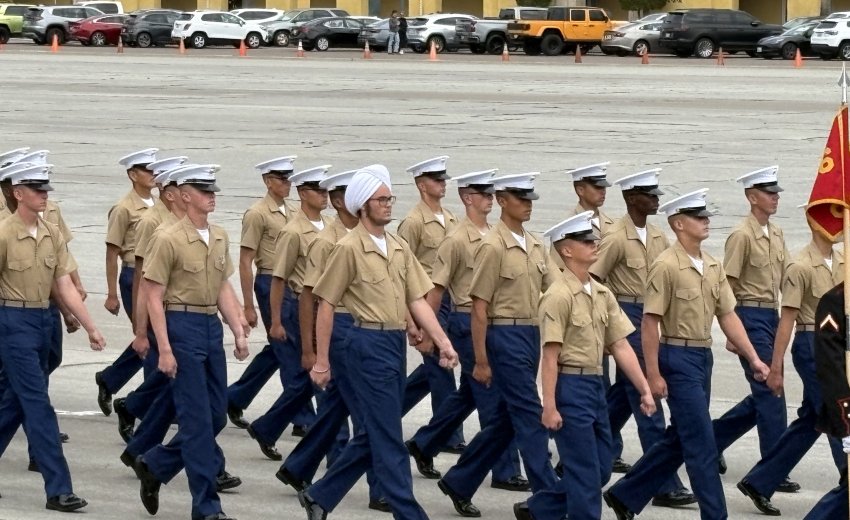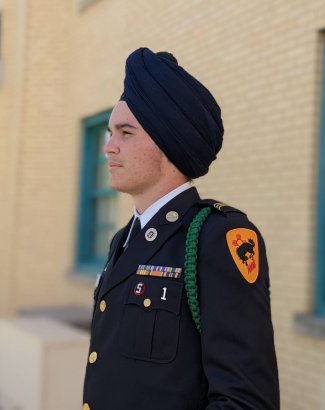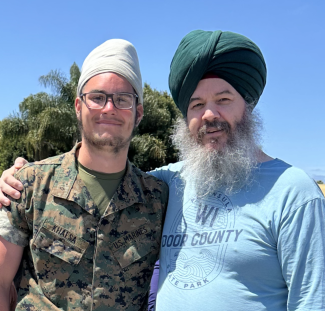Partap Singh Khalsa recently graduated from boot camp and is now on active duty in the US Marine Corps.
Partap Singh Khalsa is a third-generation American Sikh with a deep and enduring connection to India. His father attended boarding school in Mussoorie, and Partap himself spent several formative years studying at Miri Piri Academy in Amritsar. Raised in a home deeply rooted in Sikhi, he is versed in Punjabi culture and credits the heroic narratives from Sikh history as a core inspiration behind his decision to serve in the United States Marine Corps.
He explains that his time at Miri Piri Academy instilled in him essential life skills—punctuality, respect for uniform, and the ability to thrive in a disciplined, structured environment. Military service also runs deep in his family. On both his mother’s and father’s side, he descends from individuals who have served in the armed forces. His grandfather and great grandfathers served with distinction in the armies of several European nations , and a great uncle was a Marine Corps officer during the Korean War.
Choosing a military path was Partap Singh’s own independent decision, motivated by both personal conviction and family legacy. From the outset, it was clear he would need to apply for a religious exemption to maintain his Sikh articles of faith—specifically his turban and unshorn beard. Since the mid-1980s, uniform regulations in the U.S. military no longer automatically accommodated such religious attire, unlike earlier practices or those still observed in the British Armed Forces, where Sikh soldiers served valiantly in both World Wars.
The process for religious accommodation in the U.S. military is now well established, though still rigorous. It typically takes about nine months and involves several key steps. The applicant must first submit a personal statement explaining the religious basis for the request. This is followed by a letter of endorsement from a recognized religious institution—often a Gurdwara committee or national Sikh body—attesting to the applicant’s sincerity and active participation in the faith community. The military then appoints a chaplain to conduct interviews, assessing how the applicant’s religious practices would be maintained in a military setting.
While Sikh representation in the military chaplaincy has not yet materialized in the U.S., the Office of the Pentagon Chaplain has hosted Vaisakhi celebrations, including Kirtan presentations. Notably, the British Armed Forces appointed their first Sikh chaplain in 2005—Mandeep Kaur—setting an important precedent. U.S. military chaplaincy itself has evolved significantly; originally limited to Christians; it expanded in 1862 with the appointment of the first Jewish chaplain, and has since grown to include representatives of multiple faiths, including recently commissioned Muslim chaplains in the Navy.
Partap Singh who is the oldest of 4 children, describes his own interviews with the military chaplain as meaningful and insightful, allowing for a deep exploration of how his religious identity integrates with life as an active-duty Marine.
He shares:
For me, being allowed to keep my beard and turban in the Marine Corps means I can fully live my faith. I take pride in showing other Sikhs that we can serve our country while remaining true to our religious identity and articles of faith.
He adds:
I chose the Marine Corps because of the excellence and discipline it demands of me



